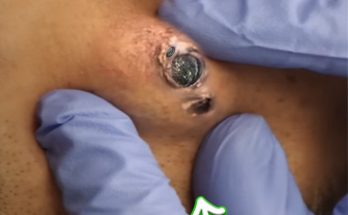Human Papillomavirus (HPV) is a very common virus, and most people who contract it will never experience any symptoms or health problems.1 In many cases, the body’s immune system clears the infection on its own within two years.2
However, some types of HPV can cause visible symptoms and, in certain cases, lead to more serious health issues like cancer.3 Here are the main signs and things you should know:
1. Genital Warts:
- This is the most common visible symptom of HPV.4
- Genital warts are caused by “low-risk” types of HPV (most commonly types 6 and 11).5 These types do not cause cancer.6
- They can appear as:
- Small bumps or groups of bumps.7
- Flat or raised lesions.8
- Cauliflower-shaped growths.9
- They can be skin-colored, white, pink, red, or purplish-brown.10
- Location: They can occur on the vulva, vagina, cervix, penis, scrotum, anus, and surrounding groin area.11
- Symptoms: They are usually painless, but can sometimes cause itching, burning, or discomfort.12
- Appearance: They can vary in size and may appear weeks, months, or even years after exposure.13 They may go away on their own, stay the same, or grow in size or number.14
2. No Symptoms (especially for high-risk types):15
- This is crucial to understand: Most high-risk types of HPV, which can lead to cancer, often cause no symptoms at all.16
- People can have HPV for years without knowing it, even if they haven’t been sexually active or had new partners recently.17
- This is why regular screenings are so important.
3. Abnormal Cell Changes (Pre-cancerous Lesions):
- “High-risk” HPV types (e.g., types 16 and 18) can cause abnormal changes in cells, particularly in the cervix.18 These changes are often asymptomatic in their early stages.
- These abnormal cells are known as pre-cancers and can be detected through routine screenings.
- Pap tests (Pap smears): These tests look for abnormal cells on the cervix that might be caused by HPV.19
- HPV tests: These tests directly look for the presence of high-risk HPV types on the cervix.20
- If left untreated, these abnormal cells can sometimes progress to cancer over many years.21
4. Cancers Linked to High-Risk HPV:
- While most HPV infections don’t lead to cancer, persistent infection with high-risk HPV types can increase the risk of:22
- Cervical cancer: Almost all cervical cancers are caused by HPV.
- Anal cancer
- Penile cancer23
- Vulval cancer24
- Vaginal cancer
- Oropharyngeal cancer (cancers of the back of the throat, including the base of the tongue and tonsils)
- Symptoms of these cancers may not appear until the cancer is more advanced and can include things like bleeding, pain, lumps, or changes in bowel habits, depending on the location.
Other Warts (less commonly associated with genital HPV but still HPV):25
- Common warts: Rough, raised bumps often found on hands and fingers.
- Plantar warts: Hard, grainy growths on the soles of the feet.
- Flat warts: Flat-topped, slightly raised lesions that can appear anywhere on the body, but are common on the face and legs.
Important Points to Remember:
- HPV is common: Most sexually active individuals will contract some type of HPV in their lifetime.26
- No cure for the virus itself: There’s no cure for the HPV infection, but the problems it causes (like warts or pre-cancerous cells) can be treated.27
- Prevention: HPV vaccines are highly effective at preventing infection with the most common high-risk types of HPV and the types that cause most genital warts. Condoms can reduce the risk of transmission but do not offer complete protection because HPV can infect areas not covered by a condom.
- Regular screenings are key: For people with a cervix, regular Pap and/or HPV tests are vital for early detection of pre-cancerous cells, allowing for timely treatment before cancer develops.
If you have any concerns about HPV, or notice any unusual growths, lumps, or sores, it’s important to talk to a healthcare provider for diagnosis and advice.



